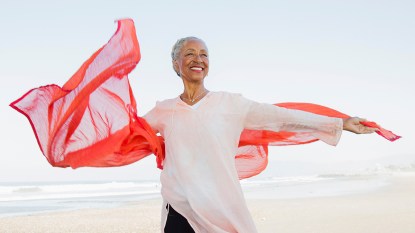Experts Reveal the Best Vitamin to Keep Muscles Strong as You Age + How to Get More
Good news: Frailty and falls in your golden years are *not* inevitable

We all know that muscle loss is a natural part of aging. The problem is, it often starts much earlier than we realize. The signs of muscle loss can be subtle. You may have noticed it’s a little harder to open that jar of peanut butter, or hopping off the couch isn’t as smooth a process as it once was. And if you become less active over time, that muscle loss accelerates, leading to a condition called sarcopenia (or age-related loss of muscle strength). Sure, exercise can help. But you may be wondering what vitamin stops age-related muscle loss to speed results. Here’s what you need to know to keep your muscles strong — and you, active and independent — for years to come.
What is age-related muscle loss?
Sarcopenia is similar to, but slightly different than, the physiological process of losing muscle mass. When you have muscle loss, the size and numbers of your muscle fibers shrink. With sarcopenia, as you get older, there is a decrease in the amount of muscle fibers in the muscle tissue itself. “This is because testosterone declines by about 3% per year in men and women starting at age 30,” says Florence Comite, MD, founder of the Comite Center for Precision Medicine & Health in New York, NY. “Without adequate testosterone — women have much less than men do — caused by this decade-by-decade decline, its’ very difficult to build and maintain muscle.”
What’s more, “‘sarcopenia is characterized by low muscle strength, low muscle quantity or quality and, if severe, poorer physical performance,” adds Serena Poon, CN, a certified nutritionist and longevity wellness expert. It becomes more common with age. Research in the Journal of Cachexia, Sarcopenia and Muscle estimates that 5-13% of adults age 60-70 and 11-50% of adults 80 and over experience sarcopenia.
In addition to aging, there are other factors that may increase the risk of sarcopenia, says Lon Ben-Asher, RD, a registered nutritionist and educator at Pritikin Longevity Center in Miami, FL. “A sedentary lifestyle, inadequate nutrition intake and hormonal changes [such as during menopause] can all contribute to the development of sarcopenia,” he notes. (Click through to learn how safeguarding your muscles wards off knee pain.)
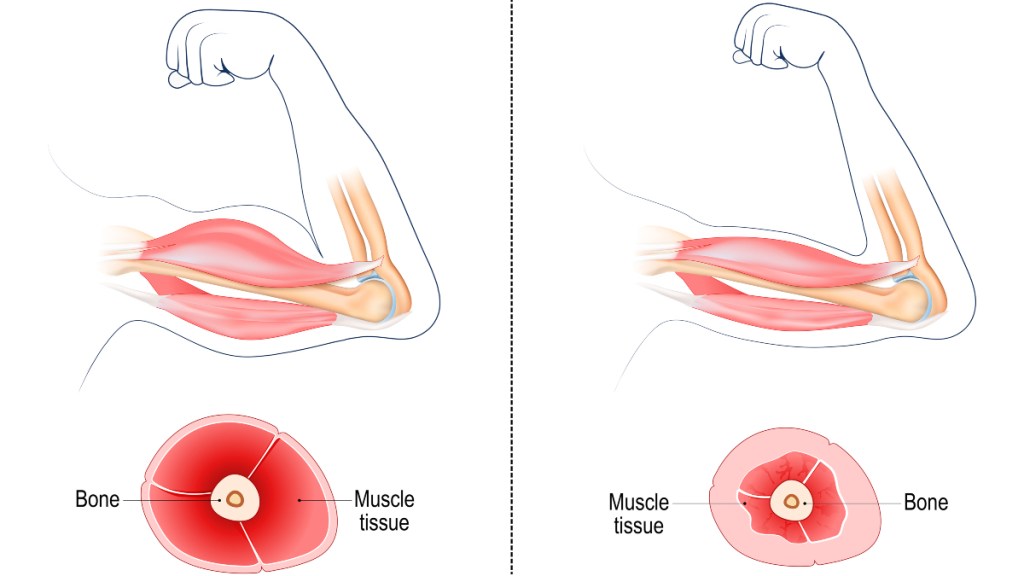
How age-related muscle loss affects your health
When you lose muscle, it can limit your mobility. As a result, many of us move less — which only accelerates muscle loss. This can increase your risk of falls and fractures, says Poon. “It’s well known that loss of muscle mass and strength marks the physical decline in the elderly that puts them at risk for hip and wrist fractures from falls,” adds Dr. Comite. “Without strong skeletal muscle, people become frail, lose their balance and struggle to simply get up out of a chair.”
Sarcopenia can also lead to more serious health conditions. It can increase the risk and intensity of respiratory and cardiac conditions. It can even up the odds of developing diabetes, too.
“Muscle is one of the main storage places for glycogen, a form of glucose used for energy,” says Dr. Comite. “The more muscle you have, the less likely you are to be at risk for insulin resistance and diabetes because glucose is moved from the bloodstream into that muscle. Less muscle means high levels of sugars can remain in our bloodstream. There, it can lead to insulin resistance, prediabetes, diabetes and ultimately damage blood vessels and organs.” (Click through to see simple food swaps that reduce diabetes risk.)
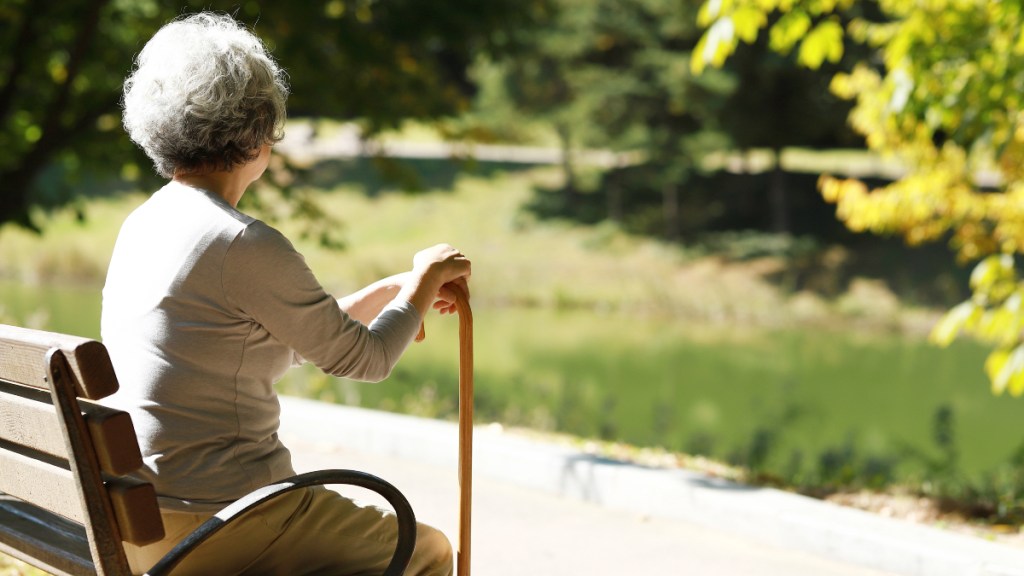
How a vitamin-rich diet stops age-related muscle loss
“Proper nutrition is essential not only for overall well-being, but functional independence as we get older,” says Ben-Asher. Even if you eat a relatively healthy diet, your nutrition needs change as you get older.
“From fluctuations in hormones to muscle loss, it’s important to constantly be calibrating what makes your body operate at its best,” adds Poon. Translation: Your diet may be lacking in certain nutrients that make maintaining muscle difficult. (Click through to learn how keeping your muscles strong reduces upper back pain, too.)
What vitamin stops age-related muscle loss?
Just like there is no magic pill for optimal health, both Poon and Ben-Asher say there is a roster of vitamins and nutrients essential for muscle health. However, if you had to pick one vitamin to focus on that stops age-related muscle loss, Ben-Ashey says it’s vitamin D. (That’s especially true if you’re deficient in the nutrient.)
“Vitamin D assists in the absorption of calcium, which is important for bone health and supports muscle function,” explains Ben-Asher. Research backs this up. One report found that low vitamin D levels increases the risk of falls and muscle weakness. Why? When you don’t have enough vitamin D, the body can’t properly absorb calcium or phosphorous, another important mineral your bones and muscles need to stay healthy.
“What’s tricky about vitamin D is that is can be difficult to get enough in a balanced diet,” says Poon. Vitamin D is naturally found in foods such as salmon, trout, tuna, mackerel, eggs and cheese. But if, like many of us, you don’t log enough of those foods in your daily routine, sunshine and supplements can help.
How much vitamin D stops age-related muscle loss?
Most adults should aim for 600-800 IUs of vitamin D a day, says Ben-Asher. The easiest way to get enough vitamin D is to make sure you spend between 5 and 30 minutes outside without sunscreen most days of the week. (If you’re going to be outside for longer, apply a broad-spectrum sunscreen after that 30-minute mark to protect your skin.) Since the body naturally makes vitamin D when sunlight strikes skin, it’s a simple way to help correct a shortfall.

But what about getting enough of the “sunshine vitamin” during winter or on cloudy days, or if you don’t have time to head outside? Good news: A vitamin D supplement can fill in that nutrient gap. When opting for a supplement, Poon says to look for vitamin D3 (cholecalciferol), which is more effective at increasing vitamin D in the body.
“Another way to boost absorption is by taking nutritional cofactors into consideration,” says Poon. “For example, vitamins D and K have synergistic properties that can boost cardiovascular and bone health.” To this end, you may want to consider taking a supplement combined with vitamin D3 and K2.
Related: The Best Vitamin D Supplements for Women Over 50 — Plus, MDs On Why You Need One
More ways to prevent age-related muscle loss
When it comes to what stops age-related muscle loss, vitamin D may be beneficial. But it’s not the only thing you’ll need to increase to maintain muscle as you get older. Here are some tips for optimal muscle heath:
1. Savor whole foods
There’s a link between nutrient insufficiencies and sarcopenia, says Poon. “Eating enough calories that are primarily protein, vegetables, fruits, whole grains and legumes can help protect and preserve muscle health,” she adds.
Plus, whole foods like grains, legumes and dark, leafy greens contain magnesium and calcium. “Magnesium is crucial for energy production and muscle function, while calcium provides bone support and strength — all contributing to muscle health,” notes Ben-Asher.
What’s more, many whole foods contain anti-inflammatory properties thanks to omega-3 fatty acids and vitamin C, an antioxidant that is responsible for collagen synthesis, adds Ben-Asher. This is especially important for connective muscle tissue.
How to sneak more whole foods into your diet
Poon says the best muscle-building whole foods are unprocessed lean meats and eggs. And it’s no surprise she recommends having muscle-building protein at every meal. Other ways she incorporates more whole foods into her diet:
- Lean on frozen veggies. “When you’re ready to eat them, just place them on a baking sheet, drizzle with oil — I prefer avocado oil — and Himalayan sea salt and roast for about 15 to 30 minutes, until crispy and brown. I also love adding garlic and fresh herbs for extra flavor.”
- Puree vegetables. Then use them as a base for sauces, soups, dips and vinaigrettes. “This kind of base reduces the need for added fats and sugars.”
- Make a ‘whole foods shelf’. On it: brown rice, quinoa, oats, canned beans, nuts, seeds and frozen fruits and vegetables. “Having these items readily available makes it easier to create healthy meals,” Poon explains.
Two whole foods recipes Poon likes: Her high-protein vegan white bean salad for an easy, plant-based dinner. It provides protein and fiber, along with antioxidant-rich tomatoes and immune-boosting herbs and spices. For a vitamin-packed dish, she likes this kale salad. “You’ll fill up on vitamins A, C, potassium, calcium, magnesium, fiber and free radical-fighting antioxidants,” she says.
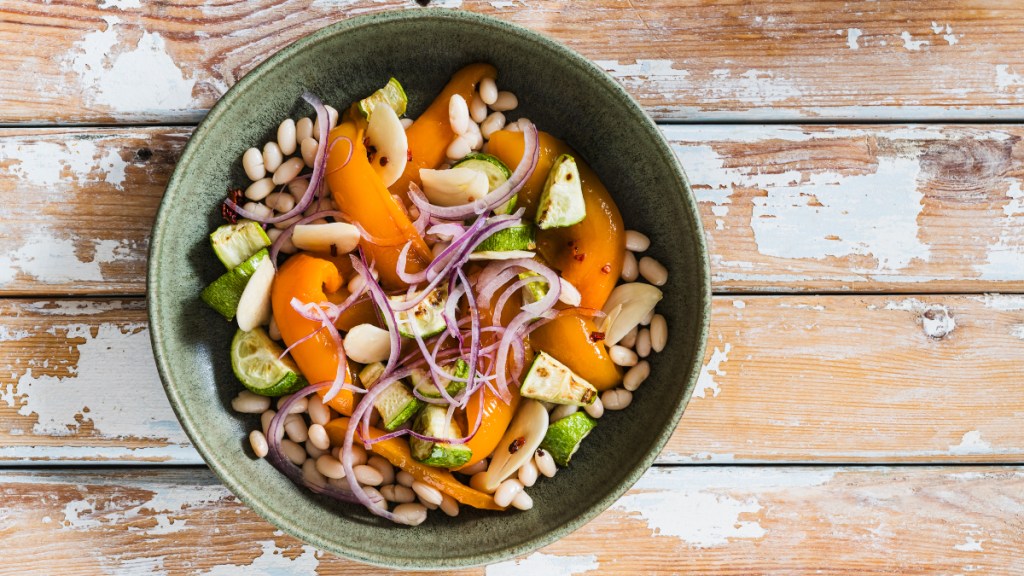
2. Don’t skimp on protein
“Protein is the building block of muscles,” Poon says. “As we age, it may be necessary to increase protein intake to maintain muscle protein synthesis,” or the process which cells make proteins for growth, movement and other cell functions.
The daily recommended dietary allowance (RDA) for protein is 0.8 grams protein/kg body weight. For a 165 lb. woman, that’s about 60 grams of protein daily. But for older adults, research suggests that’s not enough. A review in Clinical Nutrition found that older adults who want to preserve muscle mass should increase that number to 1.5 grams protein/kg body weight per day, or about 112 grams of protein for a 165 lb. woman.
Some tasty, protein-rich foods include lean meat and poultry, fish, eggs, Greek yogurt, nuts, cottage cheese and black beans. (Need some more inspiration? Click through to learn how to make ‘proffee‘, or protein coffee, which also aids in weight loss.)
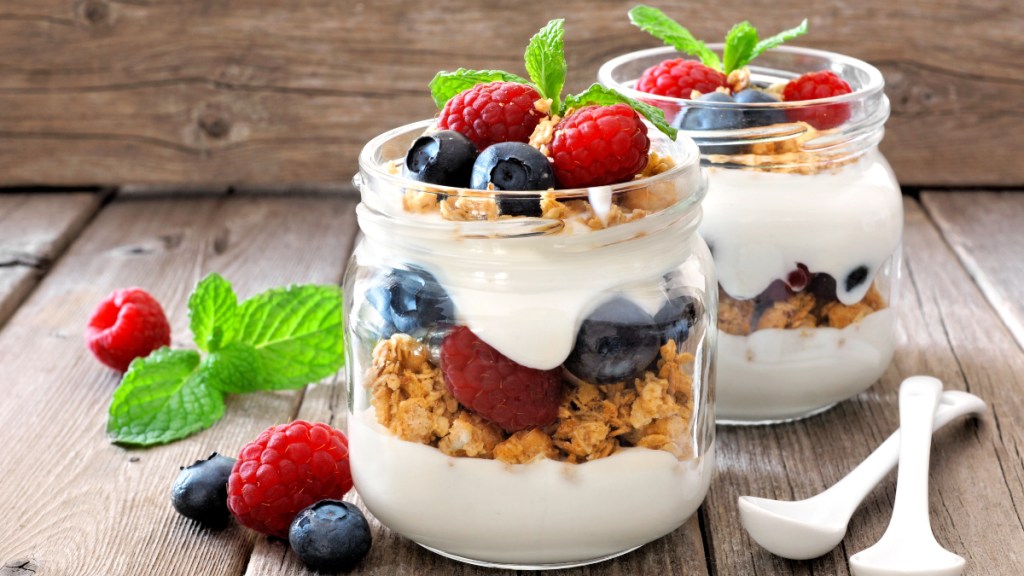
3. Drink up
“Taking certain medications and aging in general can impact thirst cues,” reveals Ben-Asher. “Staying hydrated is crucial for muscle function and well-being.” As a rule of thumb, aim to drink one-third of your body weight a day in ounces, or at least 6 to 8 cups of water a day.
In need of some motivation to drink more? Try adding natural flavors to your water, such as infusing lemon, fresh berries or cucumber slices. “Let the water infuse for a few hours, or even overnight in the refrigerator, to allow the flavors to fully develop,” says Poon.
You can also stay hydrated by consuming foods with a high-water content. “Make a smoothie using water as the base,” says Ben-Asher. “And eat more water-rich foods like cucumbers, watermelon and tomatoes to stay hydrated if you have trouble drinking enough.”
Tip: Ben-Asher recommends setting an alarm every couple of hours to make sure you’re consistently sipping throughout the day. (Click through to see the best way to clean a reusable water bottle and wipe out germs.)

4. Seek out good stress
“Placing [good] stress on the body can reverse muscle loss,” says Claire Morrow, PT, DPT, a physical therapist for Hinge Health. “Resistance training and higher intensity training increases and maintains muscle mass.”
Morrow says to aim for at least two days a week of resistance training. The key is to do it consistently and frequently (think: every other day). This helps strengthens your muscles and will help you handle more resistance or heavier weight over time. “For example, if you do push-ups once every 10 days, you’ll feel sore the next day each time,” says Morrow. “But, if you do push-ups every three days, you’ll stop feeling sore with the same number of push-ups and gradually be able to do more.”
One way to sneak in some resistance work without even trying? Take the stairs whenever you can. “Stairs use multiple muscle groups in your lower body, making it an efficient, easy way to exercise,” says Morrow.
5. Take a deep breath
“Chronic stress can cause inflammation in the body as well as muscle loss,” explains Ben-Asher. “Stress-reducing activities can help with this, including yoga, meditation and breathing exercises.” Check out the video below for a quick how-to breathing exercise:
Tip: You can boost the benefit by finding a stress-busting activity that also encourages movement. Try a walking meditation, jog, bike ride, swim or another low-impact activity for best results.
For more on sneaky nutrient deficiencies that can sap your health:
This Sneaky Vitamin Deficiency May Be the Cause of Your Thinning Hair — Here’s How to Really Fix It
This content is not a substitute for professional medical advice or diagnosis. Always consult your physician before pursuing any treatment plan.


